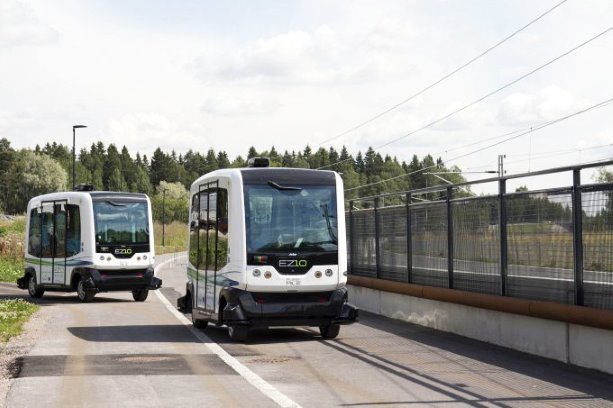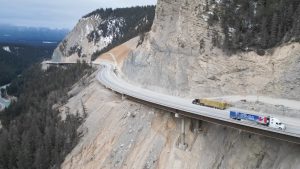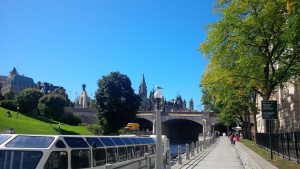The dawn of a new era of automated vehicles (AVs) will introduce new levels of complexity and unpredictability to the transportation systems of the developed world, says Toronto-based systems engineer Bern Grush of Grush Niles Strategic.
But within a relative short period of time, perhaps 35 years, this chaos — with two phases of systems adoption unfolding simultaneously, shorter term with semi autonomous, and longer-term with fully autonomous vehicles — could stabilize into an "end game," said Grush.
And so he is inviting policy-makers, engineers, even the minister of transportation, to work towards the goal of redefining the purpose of public transit, to look ahead to that end game, possibly around 2050, and create a transportation system in which the ratio of driver-owned vehicles to non-owned vehicles has been switched from 80:20 to 20:80.
Grush, author of the recently released paper titled Ontario Must Prepare for Vehicle Automation, commissioned by the Residential and Civil Construction Alliance of Ontario, said he would be presenting this vision in a private meeting with Ontario Minister of Transportation Steven Del Duca the week of Dec. 5.
Grush offered an overview of the types of infrastructure that engineers and constructors need to prepare for. They need to start planning right now, he said.
But as a priority, he said, governments should stop squabbling about building rail transit lines. They will be needed for the short-term and the long-term.
"You ask, what do we do with the stuff that we are building now," said Grush. "To stop those things would be as irresponsible as what our municipal and regional governments have been doing the last few years, they keep cancelling and changing things. The fact that we are still arguing about subways and LRTs is disgusting."
Vehicle congestion should increase in the near term as semi-autonomous vehicles come on-stream and should taper off as vehicle ownership declines, but city streets will not radically change and road grids will still be required, Grush said. Engineers will need to design for "complete streets," creating infrastructure to accommodate a greater variety of usage and different modal splits. The complete street, explains Grush in his paper, will be designed to "enable safe access for all users, including pedestrians, bicyclists, motorists and transit riders of all ages and abilities."
As more non-driver-owned vehicles hit the road, parking facilities will become repurposed, Grush said, and there will be a reconfiguration of municipal streets to include more drop-off zones and more bike lanes, to make "first- and last-mile" exchanges more attractive.
The 2050 vision includes a broad range of conveyances connecting with public transportation grids, said Grush. There will still be trunk lines on rails carrying people over longer distances but, for first- and last-mile trips, co-ordinated robo shuttles and robo taxis would whisk people throughout village centres that will then become linked to each other.
"I believe that we need all the rail we have now and we still need more," said Grush. "What I am saying is, in this future world with robotic transit taking you five kilometres, there would be transit nodes, around which there would still be transit-oriented development, that can still be in place, and all the communities should have complete streets."
The key to convincing 60 per cent of travelling citizens to switch away from owning their own vehicles, said Grush, is redefining why we build transit.
"We never say, the purpose of transit is to not have people have a car at all," he said. "But if we want you to make that switch, what do we have to do for you?
"We need vehicles that fill in all the ranges of socially desired conveyances. We need a range of vehicles, a range of services in terms of quality, expense, timeliness."
In terms of systems, Grush described, as an example, the development of efficient AV systems in small neighbourhoods such as the Distillery District and Liberty Village in Toronto that could spread inkblot-like across urban centres so that at some point travellers could do all of their commutes to work and all of their day trips and errands using a combination of robo shuttles, robo taxis and public transit on rail.
To encourage such focused planning, Grush proposes a prize. The Ontario government should not be subsidizing pilot projects that focus on AV technology, he said — there is lots of profit motive for the private sector to do that — but rather should be calling on engineering firms to design coordinated first-mile, last-mile robotic systems. Europe’s CityMobil2 and programs in Singapore and Pittsburgh are models, he said.
"If your design wins, the prize could be, if we like your system, we license you for 50 years to run it, because there are profits in that system," said Grush.
"That’s why we want to have them detail the plans," he said, referring to transportation planners and engineers. "I am a systems thinker, I am not a transportation planner. And we need to train the transportation planners to answer the question.
"We have never had free-roaming automated vehicles before. That is a new tool, and what can you do with that tool?"











Recent Comments
comments for this post are closed